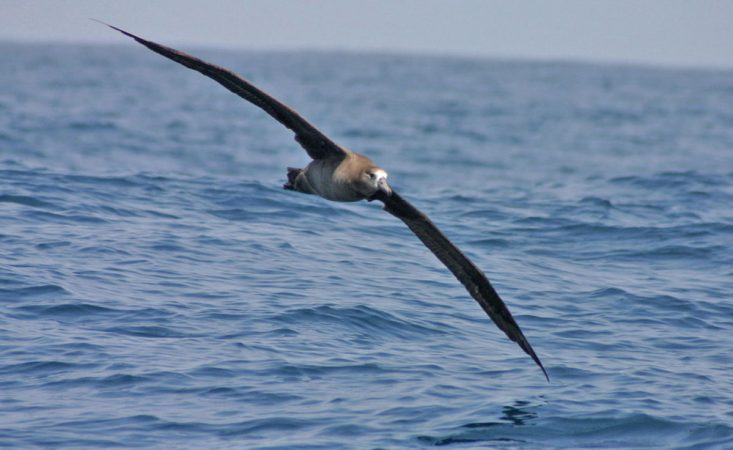Math for hungry birds
Seabird traces patterns while searching for food

People may say that math is for the birds. A new study shows this may be true, at least for a giant seabird called an albatross.
A team of scientists in Europe recently studied the flights of these large birds as they hunted for food. The scientists did not observe the birds adding, subtracting, multiplying or dividing. But when the researchers looked at the shapes traced by the birds’ flights, the formations looked familiar.
The twists and turns of the flight path looked a lot like a fractal, a mathematical design. Fractals are curves or shapes that look almost the same no matter how far you zoom in or how far you zoom out. (Mathematicians call this feature “self-similarity.”) The shape of a country’s coastline, for example, looks like a fractal. Observed from a faraway satellite, the coastline looks like a squiggle. If you fly over the coast closer, in a helicopter, you’ll see that the squiggles have their own, smaller squiggles (like large jutting rocks or cliffs). And if you walk along the coast on your own two feet, you’ll see even smaller squiggles where the tide laps against the land.
The scientists who studied the albatrosses found self-similarity in the birds’ flights. They attached GPS devices to 88 birds. Each GPS device recorded the position of the bird it was attached to either every second or every 10 seconds. Using this method, scientists could trace the path of the bird on a map. The team found that the birds often flew long distances in a straight line and then made lots of turns and shorter flights as they hunted for food over a new section of the ocean.
“Think about searching for your car keys,” team member David Sims told Science News. “You intensively search in one area, but if you don’t find them there, you jump to someplace else and search there.” Sims is a behavioral ecologist at the Marine Biological Association of the United Kingdom in Plymouth, England. Behavior ecologists study how where an animal lives influences its behavior.
This kind of fractal-like pattern is called Lévy flight. Like a fractal, the shape of the birds’ flight path looked similar when viewed from far away or close-up. However, the birds’ path wasn’t a true fractal: The pattern disappeared at extreme distances. But within a certain range, the pattern was self-similar.
Scientists suspect that many animals, including sharks, jellyfish and penguins, follow a Lévy flight path when hunting for food. This approach — a long trip, followed by a short and choppy hopscotch around an area — may help them find more food faster.
Not every scientist believes the giant seabirds use math to hunt, however. Simon Benhamou, an ecologist at the National Center for Scientific Research in Montpellier, France, told Science News that he’s not convinced. He said he thinks the new study is interesting but limited. Scientists can get a truer view of hungry birds’ flights, he said, by looking for even more complicated patterns.
POWER WORDS
fractal A curve or geometric figure, each part of which has the same basic character as the whole. Fractals are useful in modeling structures (such as eroded coastlines or snowflakes) in which similar patterns recur at progressively smaller scales.
GPS, or global positioning system An accurate worldwide navigational and surveying facility based on the reception of signals from an array of orbiting satellites.
behavior ecology The study of how animal behaviors help them survive in their environments.
albatross A very large oceanic bird with long, narrow wings. Some species have wingspans greater than 10 feet.







